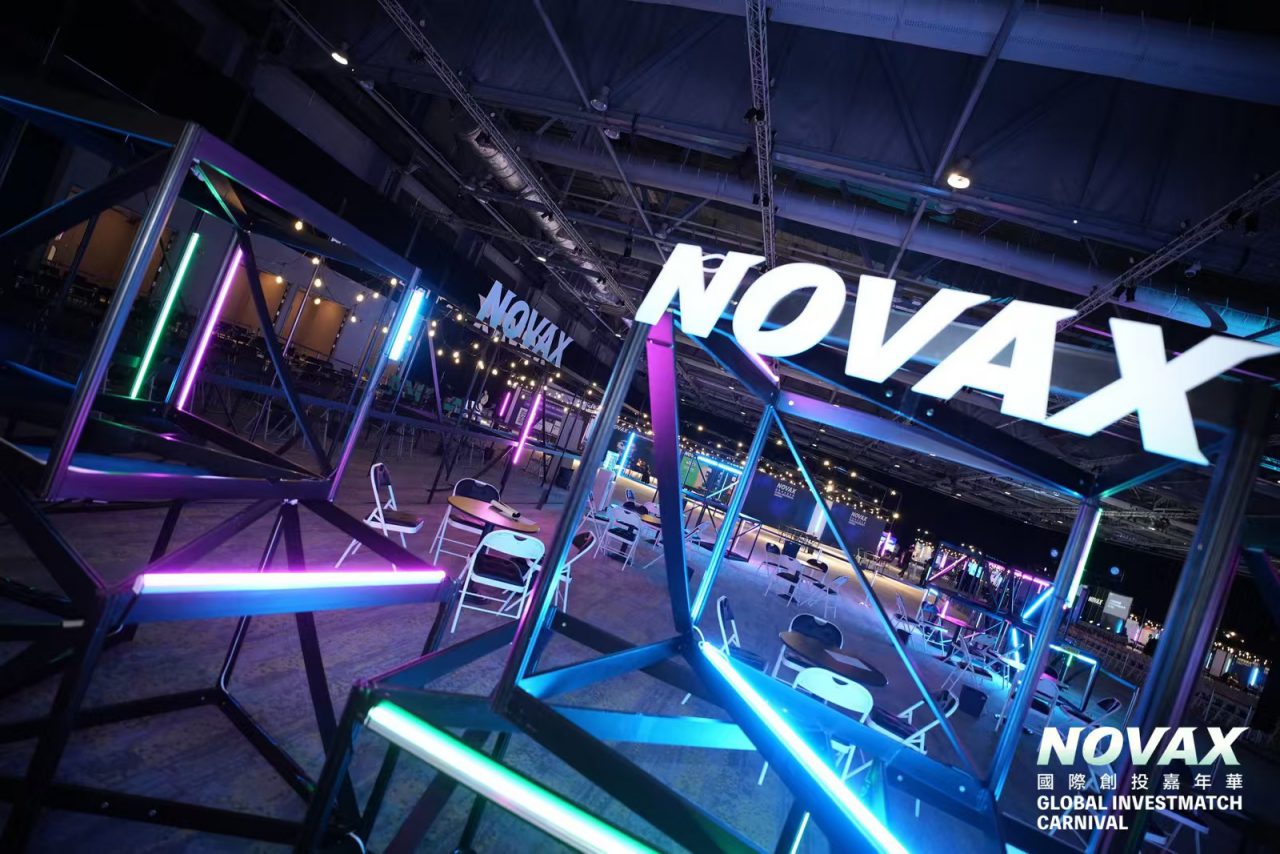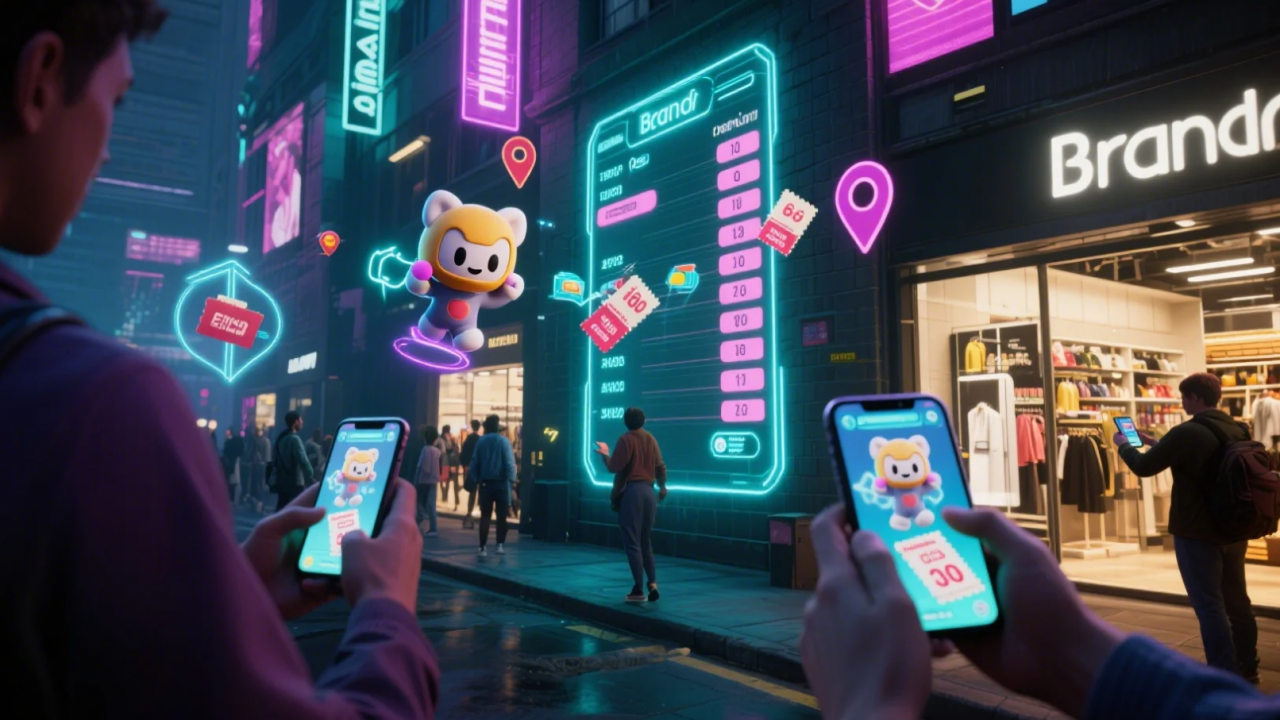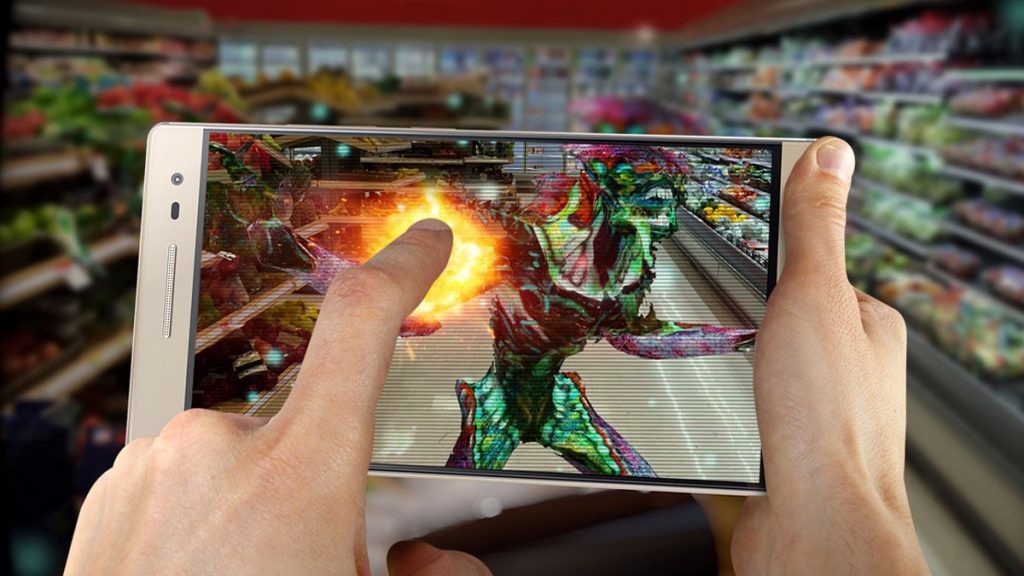
Blog
Why Choose AR Gaming: Uncover Benefits for Customers and Brands
With the rapid evolution of AR (Augmented Reality) technology, AR interactive gaming is fast becoming a hotbed of innovation in the gaming industry. AR combines virtual elements with the real world, offering players an immersive gaming experience like never before.
Players in AR interactive games can interact with virtual characters and explore virtual worlds within their actual environment. This blend of reality and virtuality offers vast prospects and opportunities for the entire gaming industry.
In this article, leveraging over a decade of experience in developing AR algorithms, Kivisense delves into the latest trends in AR interactive gaming. We highlight creative and engaging AR game cases worldwide, demonstrating how they provide ultimate enjoyment for users and contribute to brand revenue growth.

AR Gaming: The Basics
AR interactive games merge virtual content with the real world, providing users with innovative gaming experiences. Players use smartphones, tablets, or head-mounted displays to interact with virtual objects and characters, breaking the bounds of traditional gaming to enjoy a more immersive and interactive experience.
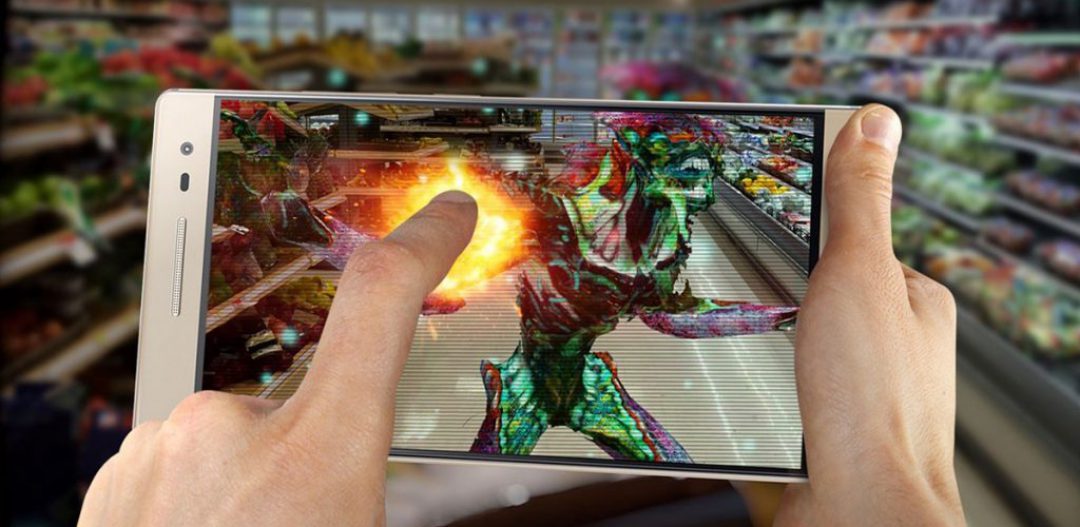
Benefits of AR Gaming
Immersive Gaming Experiences
Realism and Immersion: AR games merge virtual elements with the real world, allowing players to experience game content in their actual environment. This mix of realism and immersion significantly enhances the gaming experience, centering around the player and greatly boosting their engagement.
Interactivity and Social Engagement:AR games often enable player interaction, with multiple players collaborating or competing in tasks or challenges. This social aspect not only increases the fun but also provides opportunities for cooperation and competition.
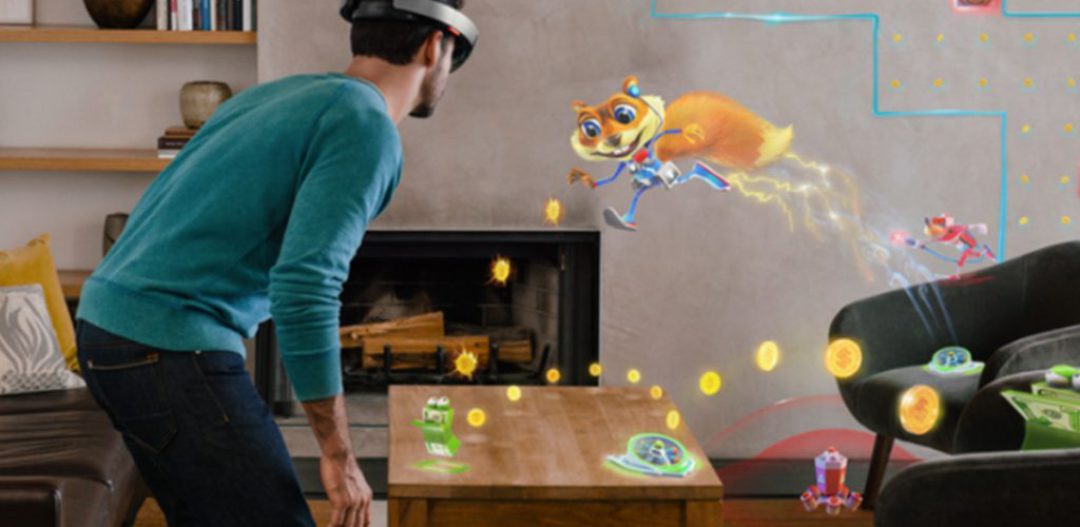
Arena of Valor: A Benchmark in AR Interactive Gaming
China’s blockbuster mobile game, Arena of Valor, recently launched its AR version, providing a more immersive, realistic, and interactive gaming experience. In this classic tower defense and multiplayer online battle game, players bring heroes, props, and maps from the game into the real world, creating a truly immersive experience.

Upon entering the game, players use their smartphones or tablets to bring the game’s heroes, props, and maps into the real world, blending them with their environment for a more authentic and dazzling gaming experience. Players can even summon game heroes for battles right in their living rooms or use their mobile devices to seek hidden game items on the streets, fully showcasing the realism and immersion that AR interactive games offer.
Compared to traditional games, Arena of Valor’s AR interactive version boasts a variety of rich interaction methods. Players can use voice commands and gesture controls to interact with virtual elements, creating a highly interactive gaming experience. Moreover, this AR interactive game supports sharing gaming experiences through social networking platforms, facilitating social interaction among players.

Effective Brand Marketing and Promotion via AR Gaming
AR games attract user participation and interaction with brands. Through in-game tasks and challenges, users engage deeper with brands, increasing their involvement and loyalty. Importantly, the strong interactivity of AR games encourages user sharing, thereby extending the brand’s reach.
MOSCHINO’s Triumph in Valentine’s Day Marketing with AR Gaming
In its 2022 Valentine’s Day campaign, Italian luxury brand MOSCHINO distinguished itself with an AR interactive game named ‘Kiss the Little Trick’. Users enter the brand’s official WeChat mini-program, unlocking AR facial filters to create magical, adorable AR red lips. This game deepened brand engagement while playing, and an enticing reward system encouraged user participation and sharing.

To entice more users to participate, MOSCHINO established an attractive rewards system for their AR interactive game. By experiencing the game and accumulating points, users could redeem substantial discount coupons. Furthermore, at the game’s conclusion, players could share with friends and invite them to assist. This rewards mechanism not only fully engaged player enthusiasm but also encouraged users to share the game with friends for communal play, successfully leveraging existing customers to reach new ones. This strategy significantly contributed to MOSCHINO’s impressive marketing achievements during the Valentine’s Day campaign.
It’s noteworthy that the brand, with its creatively and marketing-driven AR interactive game won the 2023 China Digital Media Award, achieving both fame and profit! This accolade underscores the success of integrating creativity and marketing in AR interactive gaming.
Deepening Brand Recognition and Affection with AR Games
AR interactive games enable brands to weave their logos, products, or imagery into the gaming experience, forging a closer bond between users and the brand. This immersive experience significantly enhances brand awareness and recognizability.
Loewe Harnesses AR Gaming for New Product Marketing
LOEWE, in collaboration with Japanese ceramist Suna Fujita, crafted a unique 2023 Holiday Selection Series, bringing a distinct experience to users through AR interactive gaming.
When customers visit a LOEWE boutique and open the brand’s WeChat mini-program, they embark on an AR interactive gaming adventure. By scanning the cartoon patterns on limited edition handbags, clothing, or accessories, adorable animals leap into the real world, showcasing playful and dynamic postures. Players also unlock exclusive emojis and wallpapers for each animal, capturing the essence of childlike fun.

Moreover, LOEWE provided an AR filter experience. Users could take selfies with pandas, penguins, reindeer, and other whimsical animals by using the front camera, starting an exploration journey filled with childlike wonder.
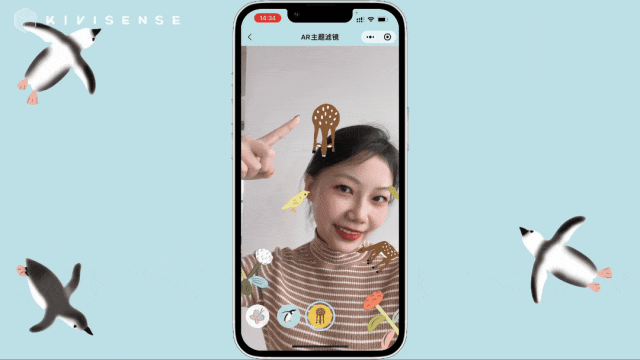
LOEWE’s successful use of AR interactive gaming to draw customers to its boutiques not only deepened their memory of the brand’s products but also allowed them to experience the quality and fashion of the merchandise. Such interactions are likely to spark purchase desires, contributing to GMV growth.
Expanding Brand Exposure through Social Sharing
AR interactive games inherently feature social sharing capabilities. Users can capture and share engaging moments from the game with friends and on social media. This type of social sharing effectively broadens brand exposure and has the potential to attract more prospective customers.
Dolce & Gabbana Captures Traffic with AR Game
For Valentine’s Day, Dolce & Gabbana launched the ‘Door to Love’ AR interactive game in their official WeChat mini-program, reimagining the story of Oriental romance for the festival. Utilizing AI gesture recognition and tracking technology, users could traverse portals in time and space to encounter surprises in the Milky Way galaxy.
Dolce & Gabbana skillfully employed a brief yet entertaining AR interactive game, infusing it with the essence of Valentine’s Day and enhancing consumer engagement through emotional resonance. Upon completing the AR interactive game, users could generate beautiful posters with a share button and even participate in a draw to win fashionable hats or unlock limited edition red envelope covers from the brand. With visually stunning posters and red envelope covers, Dolce & Gabbana sparked the desire to share among users, achieving a dual capture of public and private domain traffic, thereby directly increasing brand exposure and laying a solid foundation for sales growth.

The Difference Between AR Games and Traditional Games
Gaming Environment
In contrast to traditional games set in virtual environments, AR interactive games blend virtual elements with the real world. Utilizing smart device cameras or AR glasses, AR technology overlays virtual objects, characters, or scenes onto the user’s real-world surroundings, allowing for gameplay in actual settings. This fusion creates a new level of immersion and interactivity.
User Engagement
AR interactive games enhance user engagement through interaction with the real environment. While traditional games typically rely on controllers or keyboards, AR interactive games allow for interaction with virtual elements using gestures, voice commands, and other interactive methods. Additionally, users can move, touch, and rotate virtual objects in the real world, making the gaming experience more intuitive and lifelike.
Gaming Experience
AR interactive games offer a unique gaming experience compared to traditional games, which primarily use on-screen imagery and sound. By merging virtual elements with the real environment, AR games enrich the gaming scenes and plots. Players can explore virtual worlds in their homes, streets, or parks, engaging in real-time interaction with virtual characters. This tangible engagement brings the fun and uniqueness of AR interactive games to life.
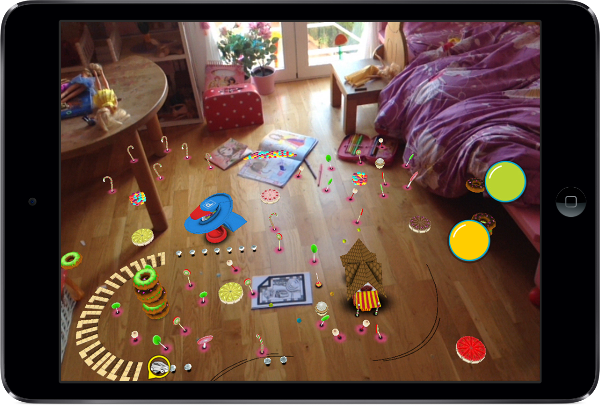
Future of AR Gaming
AR interactive gaming, as an emerging entertainment form, shows tremendous potential and limitless possibilities. With continuous advancements in AR technology, we can expect AR games to provide more realistic and innovative experiences in the future, also offering richer and more effective marketing and promotional methods for brands.
As an AI platform company specializing in AR, Kivisense sees AR interactive games as a bridge into the digital gaming era and a powerful tool for digital marketing. These AR game case studies demonstrate that engaging customers through gaming has become an optimal choice for brand marketing. Kivisense is committed to using its deep AR and AI technology expertise to help brands enter a new era of digital marketing and promote the positive development of AR interactive games.

Unleash the Power of AR with
Our AR Martech Solutions
Explore More Content
Ready to brush up on something new? We’ve got more to read this way.

Augment Your Value in Reality. From virtual try-ons to AI & AR Martech solutions, we’re here to help make your brand shine.
Offices: Paris | Chengdu | Beijing | Shanghai
sales@kivisense.com
join our Newsletter
Copyright © 2025 Chengdu Kivisense Technology Co., Ltd. All rights reserved.

